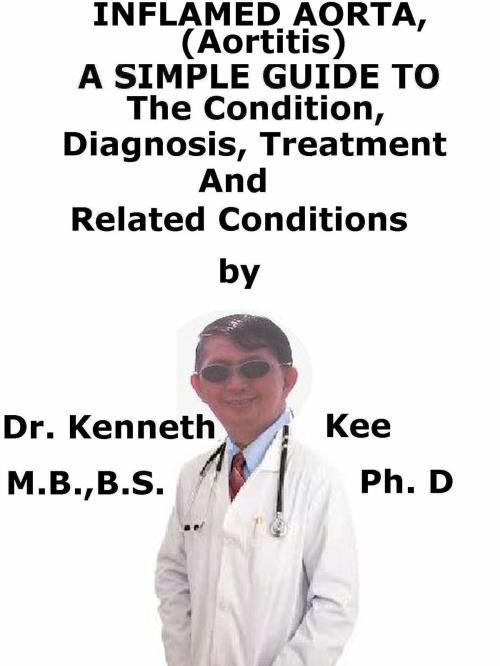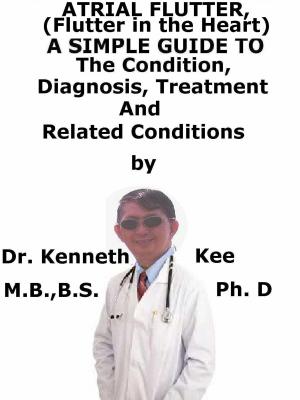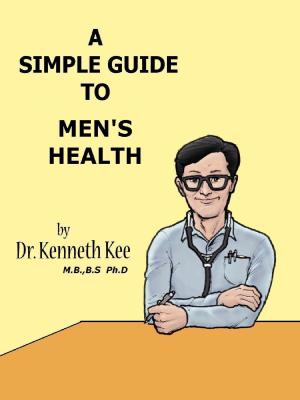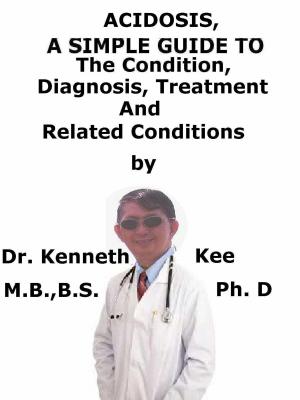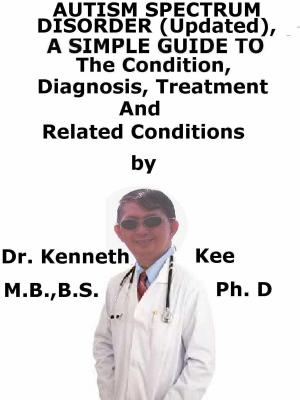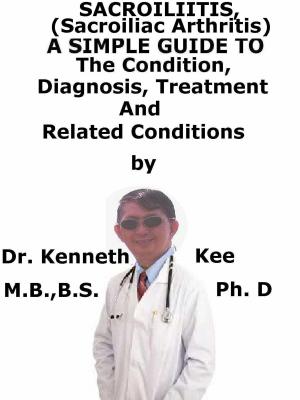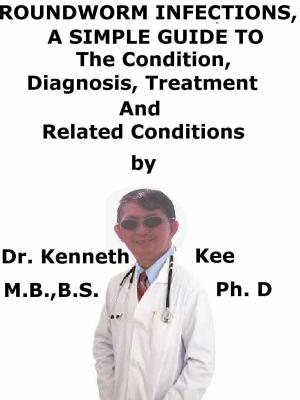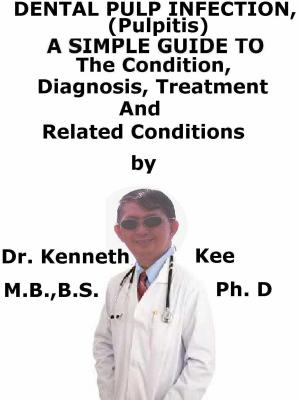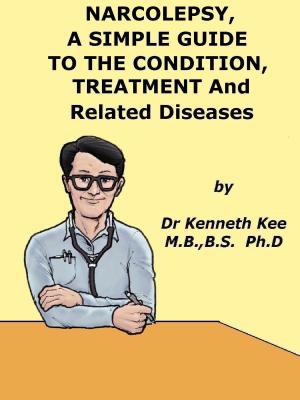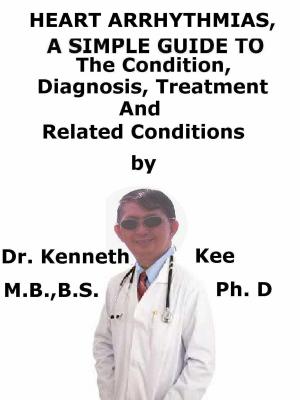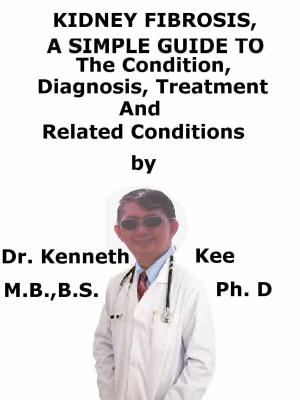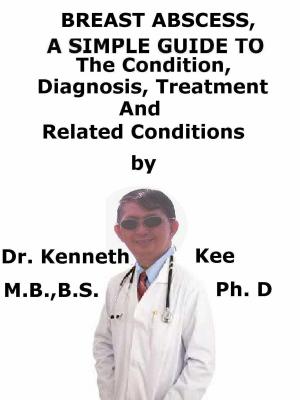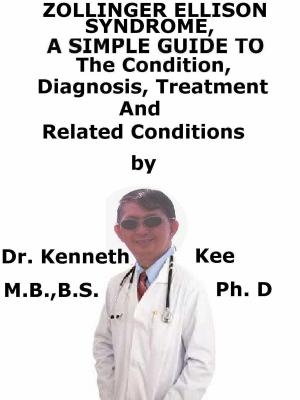Inflamed Aorta, (Aortitis) A Simple Guide To The Condition, Diagnosis, Treatment And Related Conditions
Nonfiction, Health & Well Being, Medical, Specialties, Internal Medicine, Cardiology, Health, Ailments & Diseases, Heart| Author: | Kenneth Kee | ISBN: | 9781370550203 |
| Publisher: | Kenneth Kee | Publication: | April 16, 2018 |
| Imprint: | Smashwords Edition | Language: | English |
| Author: | Kenneth Kee |
| ISBN: | 9781370550203 |
| Publisher: | Kenneth Kee |
| Publication: | April 16, 2018 |
| Imprint: | Smashwords Edition |
| Language: | English |
This book describes Aortitis, Diagnosis and Treatment and Related Diseases
Aortitis is the all-encompassing term given to inflammation of the wall of the aorta.
The most frequent causes of aortitis are:
1.The large vessel vasculitides,
2.Giant cell arteritis (GCA)
3.Takayasu arteritis
Infectious aortitis is a rare but possibly life-threatening disorder.
It is also linked with several other rheumatologic diseases.
In some cases, aortitis is an incidental finding at the time of histopathology examination after the surgery for aortic aneurysm.
Causes
This inflammation has a number of possible causes, such as trauma, viral or bacterial infections (notably, syphilis), and certain immune disorders and connective tissue diseases.
Aortitis is most often seen in patients with autoimmune vasculitis (giant cell arteritis, Takayasu's arteritis), polymyalgia rheumatica, and rheumatoid arthritis.
Symptoms
The medical manifestation of aortitis ranges across a spectrum of symptoms and medical signs, ranging from back or abdominal pain with fever to acute severe aortic insufficiency to an incidentally-identified large thoracic aortic aneurysm.
Acute aortic syndromes (aortic dissection and rupture) can occur in persons with aortitis.
Inflammation-linked thrombus formation in the aortic lumen with peripheral embolization has also been documented.
The underlying cause of the aortitis and its concomitant presentations determine the presenting symptoms.
The site of aortic inflammation (e.g., ascending thoracic versus abdominal aorta) and the occurrence of coexisting arteritis in other blood vessels also determine medical manifestation.
Because of the varied manifestation of aortitis, and the often non-specific nature of its symptoms and signs, the index of suspicion of the examining doctor must be high to form an accurate diagnosis in a timely manner
1.Back or abdominal pain with fever
2.Systemic inflammatory syndrome due to vasculitis
3.Aneurysmal disease
a.Thoracic aortic aneurysm
b.Abdominal aortic aneurysm
4.Cardiac abnormalities
a.Aortic insufficiency (acute or chronic)
b.Stable angina pectoris or acute coronary syndrome due to coronary involvement
5.Aortic thrombosis with distal embolization
6.Aortic dissection or rupture (rare)
7.Upper and lower extremity claudication with pulse deficits
8.Hypertension in a young patient (Takayasu arteritis)
Diagnosis
While the diagnosis of aortitis is suspected on the basis of medical manifestation, expedient imaging of the entire aorta with a proper method is important to establish the diagnosis.
Modern imaging tools for the aorta are:
1.Computed tomography angiography (CT),
2.Magnetic resonance angiography (MRA), and
3.Ultrasonography.
4.Positron emission tomography (PET) scanning has emerged for targeted imaging of vascular inflammation
Treatment
The treatment of aortitis is dependent on the underlying disorder.
Treatment involves:
1.Stop the inflammation,
2.Treat complications,
3.Prevent and monitor for re-occurrence.
Once the diagnosis of aortitis is done, the treatment is dependent upon the underlying cause.
The purposes of treatment are both:
1.The immediate treatment of aortic inflammation, or infection in rare cases, and
2.Monitoring and treatment of aortic and arterial complications.
Infectious causes often need urgent antibiotic treatment, while those linked with autoimmune vasculitides are normally treated with steroids.
Methotrexate, azathioprine, mycophenolate mofetil, and infliximab have shown promise for use in steroid-refractory patients
Open aortic reconstructive surgery is generally the standard of treatment for aortic aneurysms associated with aortitis
TABLE OF CONTENT
Introduction
Chapter 1 Aortitis
Chapter 2 Causes
Chapter 3 Symptoms
Chapter 4 Diagnosis
Chapter 5 Treatment
Chapter 6 Prognosis
Chapter 7 Aortic Aneurysm
Chapter 8 Dissecting Aorta
Epilogue
This book describes Aortitis, Diagnosis and Treatment and Related Diseases
Aortitis is the all-encompassing term given to inflammation of the wall of the aorta.
The most frequent causes of aortitis are:
1.The large vessel vasculitides,
2.Giant cell arteritis (GCA)
3.Takayasu arteritis
Infectious aortitis is a rare but possibly life-threatening disorder.
It is also linked with several other rheumatologic diseases.
In some cases, aortitis is an incidental finding at the time of histopathology examination after the surgery for aortic aneurysm.
Causes
This inflammation has a number of possible causes, such as trauma, viral or bacterial infections (notably, syphilis), and certain immune disorders and connective tissue diseases.
Aortitis is most often seen in patients with autoimmune vasculitis (giant cell arteritis, Takayasu's arteritis), polymyalgia rheumatica, and rheumatoid arthritis.
Symptoms
The medical manifestation of aortitis ranges across a spectrum of symptoms and medical signs, ranging from back or abdominal pain with fever to acute severe aortic insufficiency to an incidentally-identified large thoracic aortic aneurysm.
Acute aortic syndromes (aortic dissection and rupture) can occur in persons with aortitis.
Inflammation-linked thrombus formation in the aortic lumen with peripheral embolization has also been documented.
The underlying cause of the aortitis and its concomitant presentations determine the presenting symptoms.
The site of aortic inflammation (e.g., ascending thoracic versus abdominal aorta) and the occurrence of coexisting arteritis in other blood vessels also determine medical manifestation.
Because of the varied manifestation of aortitis, and the often non-specific nature of its symptoms and signs, the index of suspicion of the examining doctor must be high to form an accurate diagnosis in a timely manner
1.Back or abdominal pain with fever
2.Systemic inflammatory syndrome due to vasculitis
3.Aneurysmal disease
a.Thoracic aortic aneurysm
b.Abdominal aortic aneurysm
4.Cardiac abnormalities
a.Aortic insufficiency (acute or chronic)
b.Stable angina pectoris or acute coronary syndrome due to coronary involvement
5.Aortic thrombosis with distal embolization
6.Aortic dissection or rupture (rare)
7.Upper and lower extremity claudication with pulse deficits
8.Hypertension in a young patient (Takayasu arteritis)
Diagnosis
While the diagnosis of aortitis is suspected on the basis of medical manifestation, expedient imaging of the entire aorta with a proper method is important to establish the diagnosis.
Modern imaging tools for the aorta are:
1.Computed tomography angiography (CT),
2.Magnetic resonance angiography (MRA), and
3.Ultrasonography.
4.Positron emission tomography (PET) scanning has emerged for targeted imaging of vascular inflammation
Treatment
The treatment of aortitis is dependent on the underlying disorder.
Treatment involves:
1.Stop the inflammation,
2.Treat complications,
3.Prevent and monitor for re-occurrence.
Once the diagnosis of aortitis is done, the treatment is dependent upon the underlying cause.
The purposes of treatment are both:
1.The immediate treatment of aortic inflammation, or infection in rare cases, and
2.Monitoring and treatment of aortic and arterial complications.
Infectious causes often need urgent antibiotic treatment, while those linked with autoimmune vasculitides are normally treated with steroids.
Methotrexate, azathioprine, mycophenolate mofetil, and infliximab have shown promise for use in steroid-refractory patients
Open aortic reconstructive surgery is generally the standard of treatment for aortic aneurysms associated with aortitis
TABLE OF CONTENT
Introduction
Chapter 1 Aortitis
Chapter 2 Causes
Chapter 3 Symptoms
Chapter 4 Diagnosis
Chapter 5 Treatment
Chapter 6 Prognosis
Chapter 7 Aortic Aneurysm
Chapter 8 Dissecting Aorta
Epilogue
